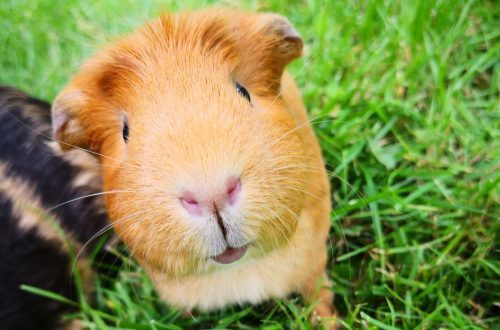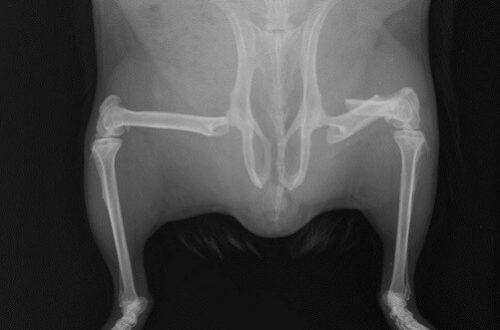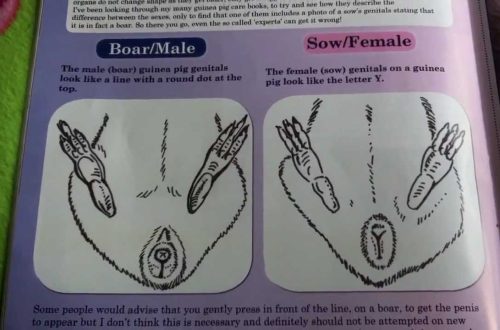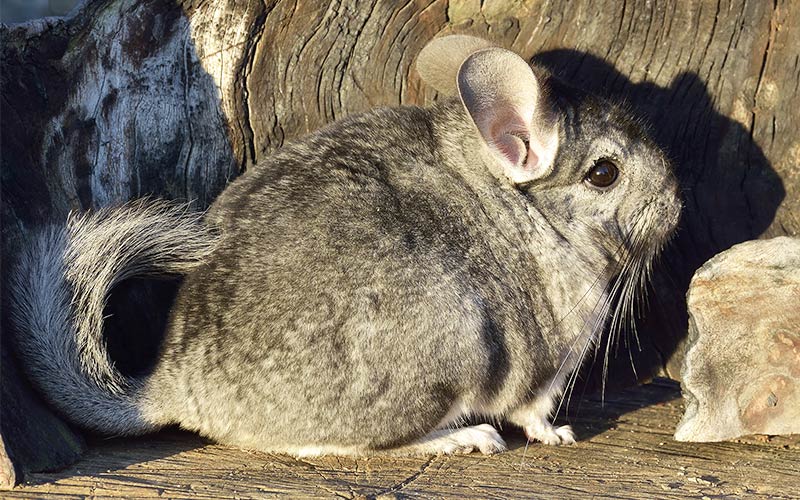
Why does a chinchilla itch and bite itself (fleas, ticks and other parasites)
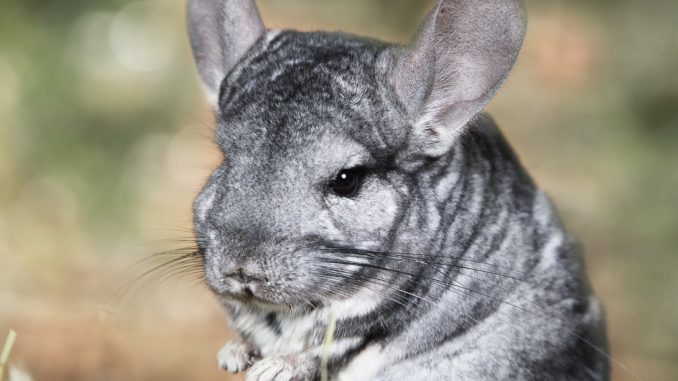
Chinchillas are neat fluffy pets that have earned recognition from many lovers of exotic animals. There is an opinion that keeping outlandish animals at home and thick dense fur exclude the possibility of small rodents being affected by various ectoparasites: fleas, ticks or lice. Unfortunately, these are delusions of inexperienced chinchilla breeders, so if a chinchilla itches and bites itself, it is urgent to show the animal to a specialist.
Chinchilla owners often ask if chinchillas have fleas or other ectoparasites and where they come from. Parasitic insects can live on different types of pets, enter the apartment from basements and sewers. A small animal can become infected through litter, hay, contact with infected pets, most often with dogs and cats, even a tenderly loving owner sometimes brings parasites into the house on clothes or hands.
Contents
Symptoms of an Ectoparasite Infestation
Infection with various parasitic insects is accompanied by a similar clinical picture:
- the chinchilla constantly scratches the skin until it bleeds and bites itself because of the constant itching from parasite bites;
- there is fragility and hair loss on the limbs and head, where the density of the fur is less;
- with a strong lesion, extensive foci of baldness and bleeding ulcers on the skin are formed, accompanied by severe edema and purulent inflammation.
Lack of treatment can cause anemia, malnutrition and blood poisoning, even death.
The main parasites of chinchillas
Chinchillas can be parasitized by several types of insects.
Fleas
Blood-sucking small insects of black color with a body flattened on both sides, 2-5 mm in size. The flea can jump far enough and cling to the animal’s fur with tenacious claws. Chinchilla is affected by rat, rabbit or cat fleas, which are able to change the owner.
If the fluffy animal has become restless, itches intensely, skin growths in the form of warts from insect bites form on the skin in the area of the ears, muzzle and limbs, hair loss is observed, then the chinchilla may have fleas.
The owner can detect insects resembling black grains when pushing the fur of a pet.
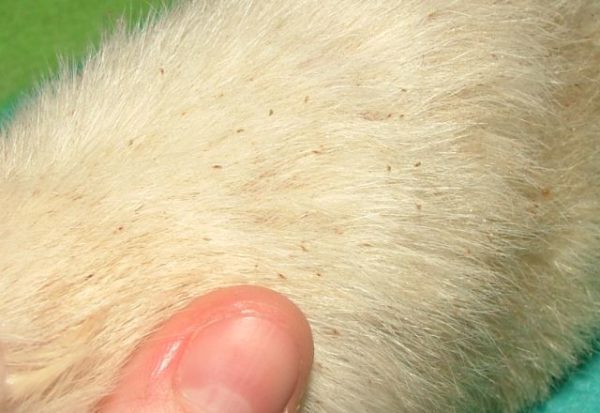
Lice and lice
Parasitic small insects of gray color, having a pear-shaped elongated body about 0,5 mm in size. Adult parasites can only be detected under a microscope. Lice feed only on the blood of the chinchilla, which is necessary for the reproduction of offspring, and the lice feed on the upper layer of the epidermis and blood. Parasitization is accompanied by severe itching and anxiety of the animal.
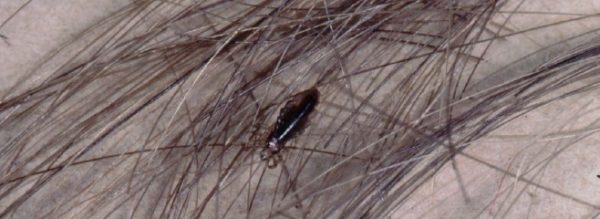
Lice and withers on the body of a small animal multiply very quickly, females lay white nit eggs, firmly gluing them to the animal’s fur. Nits resemble white dandruff that cannot be removed from a pet’s coat.
pliers
Ticks rarely infect furry animals, chinchillas have subcutaneous mites that parasitize in the upper layer of the epidermis and ear mites, the favorite place of parasitism of the latter is the skin of the ear and nose.
Infection with ticks is accompanied by itching and the formation of scratches on the body of furry animals.
Subcutaneous mites are detected by microscopic examination of skin scrapings, the owner may notice red, bulging swollen bumps from insect bites on the paws, head or under the pet’s tail. If the chinchilla’s ears are peeling, a red-yellow crust appears on the skin of the ears and nose, one can suspect infection of the pet with ear mites.
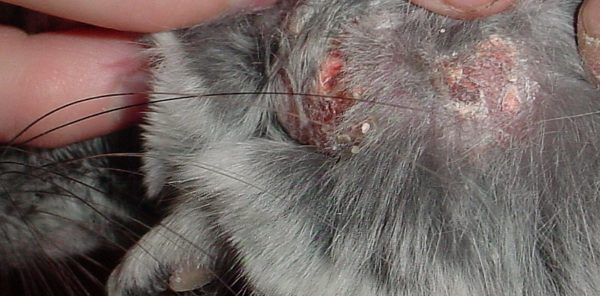
How to get rid of parasites
Often, owners of exotic rodents, not knowing what to do if a chinchilla has fleas, lice or ticks, try to treat fluffy pets on their own with common medicinal sprays, drops or powder for dogs and cats. Such treatment can result in the poisoning of a small pet if the dosage of the drug is incorrectly calculated. It is advisable to treat an infected chinchilla under the supervision of a veterinarian to clarify the diagnosis and assess the general condition of the pet. When parasitizing insects, it is prescribed:
- pet wearing a special flea collar for cats or dwarf dogs;
- cleaning and disinfection of the fluffy rodent cage and the entire apartment to destroy all parasitic insects;
- change of filler, bedding and chinchilla sand.
Prevention of infection of chinchillas with parasites
To prevent infection of chinchillas with ectoparasites, it is recommended to follow preventive measures:
- you need to buy hay and fillers only in specialized stores;
- daily wash and periodically disinfect the cage and places for walking chinchillas;
- arrange a monthly quarantine for new pets before placing them in an aviary;
- wash your hands and change your street clothes before interacting with a chinchilla.
Ectoparasites cause severe discomfort to a small rodent and are carriers of infectious diseases.
When itching, scratching wounds and anxiety appear in a pet, it is urgent to find out why the chinchilla itches and take measures to get rid of parasitic creatures as soon as possible.
Hair loss, baldness can also be a symptom of stress, boredom, non-compliance with the temperature regime, allergies and other diseases.
When a chinchilla becomes ill with infectious diseases such as a cold, indigestion, baldness of those areas where the discharge falls can also be observed.
What to do if the chinchilla itches or bites itself – find out the cause of the symptom
4.3 (85%) 4 votes



